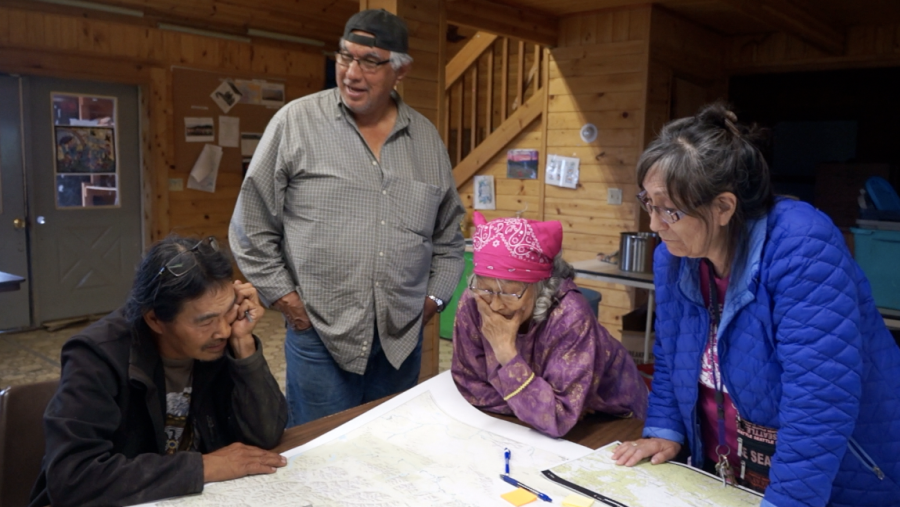For the past five years, the Anishinaabeg community of Minnesota has asked the University of Minnesota to stop its genetic work on wild rice. “We object to the exploitation of our wild rice for pecuniary gain,” wrote then Minnesota Chippewa Tribal President Norman Deschampe to the University of Minnesota in an l998 letter. “The genetic variants of wild rice found naturally occurring on the waters in territories ceded by the Minnesota Chippewa Tribe to the state of Minnesota are a unique treasure that has been carefully protected by the people of our tribe for centuries. Rights to the rice have been the subject of treaty and it is a resource that enjoys federal trust protection. … We are of the opinion that the wild rice rights assured by treaty accrue not only to individual grains of rice, but to the very essence of the resource. We were not promised just any wild rice; that promise could be kept by delivering sacks of grain to our members each year. We were promised the rice that grew in the waters of our people, and all the value that rice holds … a sacred and significant place in our culture.”
Virtually every tribal government and Native organization in the region has repeatedly called on the University to stop genetic work on wild rice. Finally, after attorneys for the Ojibwe filed a set of Freedom of Information Act requests, Dean Charles Muscoplat at the University of Minnesota began a “dialogue.” The research in contention, however, continues unabated.
100 Years of Disagreement
“Academic Freedom” sometimes collides with ethics. In the new millennium, America expects both, and that is somewhat of a challenge.
About 100 years ago the University of Minnesota dispatched its first anthropologists to the reservations in the north. Albert Jenks came, along with his colleague from the Smithsonian Institute, Ales Hrdlicka, a physical anthropologist who specialized in comparing indigenous peoples’ heads to monkey heads. The two came to White Earth Reservation and other reservations with scapulars in hand, and measured the heads of the Anishinaabeg. It turns out that Jenks not only measured Anishinaabeg heads, but returned later to study wild rice. In The Wild Rice Gatherers of the Upper Lakes, published by the Smithsonian Institution in 1900, Jenks noted with disdain the Ojibwe harvesting practices: “Wild rice, which had led to their advance thus far, held them back from further progress, unless, indeed, they left it behind them, for with them it was incapable of extensive cultivation.”
In short, Jenks surmised that Ojibwe production systems were inadequate. This assumption would become the prevailing thought at the University of Minnesota throughout the 20th century. In the 1950s, University of Minnesota researchers decided that it was time to correct the laziness and created a new domesticated crop for the state: paddy-grown wild rice.
Ervin Oelke, another researcher at the University of Minnesota, began domesticating wild rice, using germplasm from 24 natural stands from throughout the state for most of his studies. The Ojibwe would contend that those natural stands belonged to them. Absent any tribal consent, Oelke and his researchers continued with their domestication. The impact of their work was fully realized with market analysis: the wholesale wild rice price dropped $4.44 per pound in l967 to $2.68 per pound in l976.
Wild Rice and Science
The International Wild Rice Association met in the basement of the Eldorado Casino in Reno, Nevada, in February 2003. Invited to discuss some of the concerns tribal nations have with the wild rice industry, I listened to University of Minnesota Extension Agent Raymond Porter present on the issues of agronomy and research. He also sought to dispel some of the criticism levied at the university by tribal representatives. Suggesting that the criticisms have been based, in part, on “misunderstanding and faulty conclusions,” Raymond suggested that most of the issues raised by the tribes have been addressed by research and a number have been cleared up. Porter’s essential argument was that the more the Native community understands about modern science and plant genomics, the more it will be happy with the research.
Porter’s turf is the heart of Minnesota’s cultivated wild rice research: an agricultural extension and experiment station in Grand Rapids, Minnesota. In l963, the Bureau of Indian Affairs (keeping with Jenk’s improved productivity strategy) provided funds to the station to begin work on wild rice. Subsequent funding increased beginning in l964 and kept rising, with $l00,000 a year allocated to wild rice research. By the l990s, that amount increased even more. The U.S. Department of Agriculture awarded Porter a $237,l7l grant for wild rice breeding and germplasm improvement, and other grants have continued to support the research.
Over years of research, the Minnesota Agricultural Extension office has created several strains of wild rice: l968 Johnson, l970 Ml, l972 M2, l974 M3, l978 Netum, l983 Voyager, l986 Meter, l992 Franklin, and 2000 Petrowske Purple, all borne from the hands of University of Minnesota researchers. Are the varieties developed by the University of Minnesota researchers possibly contaminating the wild rice stands of the Anishinaabeg? Put it this way: there are around 6,000 bodies of water with significant wild rice beds in Minnesota, or around 60,000 acres of rice. And there are around 20,000 acres of cultivated wild rice paddies within close proximity of the many lakes of northern Minnesota. ,/p>
Pollen Drift and the Ducks
Anishinaabeg have long contended that paddy rice stands are contaminating the natural lake stands. Ronald Phillips, regents professor and McKnight Presidential Chair in Genomics at the University of Minnesota, claims there is little chance of cross pollination as long as approximately 660 feet separate the two kinds of wild rice. But research by the university extension office appears to be in keeping with criticism leveled at the university by the Ojibwe. In the summer of 2002, wild rice researchers studied possible pollen drift from paddy rice stands into wild stands. After a lot of different mathematical formulas, the bottom line is that there is a possibility that between one and five percent of the pollen from the test plots drifted up to two miles, and maybe further. Then there is the problem of the zhiishiibig—the ducks. There have been no systematic studies simulating duck and waterfowl movement in the wild rice area. Ducks and wild rice are a part of traditional Anishinaabeg stories, and likely will be in the future. Ducks and waterfowl do not differentiate between paddy rice plots and natural stands of wild rice; they move freely between both areas, carrying the rice from one into the other.
Wild Rice’s Green Revolution
In the 1960s, paddy wild rice became a crop in Minnesota. Its production grew greatly in the 1970s, and Minnesota declared it the State Grain. Shortly thereafter, most people decided that to be in the wild rice industry, they needed to move to California, where they wouldn’t have to contend with hail, wind, a fickle water supply, or inclement weather. By 1983, California was producing 8.5 million pounds, to Minnesota’s 5 million pounds. In 2002 California produced 18 million pounds of paddy rice, while Minnesota’s supply remained constant.
One would think that this quick shift to California would spell the end of the University of Minnesota’s interest in the domesticated wild rice industry. But during the last five years the university has spent at least $1 million on its wild rice research programs—not including the budgets for their large wild rice breeding and genetics projects. This money, which comes mostly from the USDA, has been spent to benefit 20 paddy rice farmers, while Minnesota’s 50,000 Indian people have been pushed aside once again.
Moving Forward
The Manoomin Ogitchidaag Coalition is composed of representatives from most of the Anishinaabeg bands in the region. In September 2003, the coalition made clear its demands to the University of Minnesota in a letter to Muscoplat’s office: “a moratorium on genomic research and genetic research of wild rice at the University of Minnesota, to be effective December 3l, 2004; protection of Anishinaabeg Intellectual Property Rights to Wild rice, including a ban on selling these rights; a cultural consultation program to be set in place by the University to examine the ethics of research on cross cultural issues; and mutually agreed upon beneficial research to be done on behalf of Anishinaabeg people, equal to that done on behalf of the cultivated wild rice industry.” The university has yet to address these concerns.
One hundred years have passed since the head-measuring doctors came to the Anishinaabeg community. Academic freedom standards at that time may have been a bit lax, but the Anishinaabeg are concerned that the standards have not changed. Universities need to start recognizing that there is academic responsibility that goes along with their academic freedom. University of Minnesota researchers have stated that they will not genetically modify wild rice, which is a first step in guiding its research in the right direction. But there is much work to be done. The Anishinaabeg community is hopeful that the University of Minnesota will bring ethics into its relationships with indigenous people and others in the new millennium, so that we may stop the destructive patterns of research, and work toward a positive future for all of our children.
Winona LaDuke is founding director of the White Earth Land Recovery Project in Minnesota and program director of the Honor the Earth Fund.



